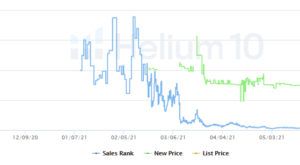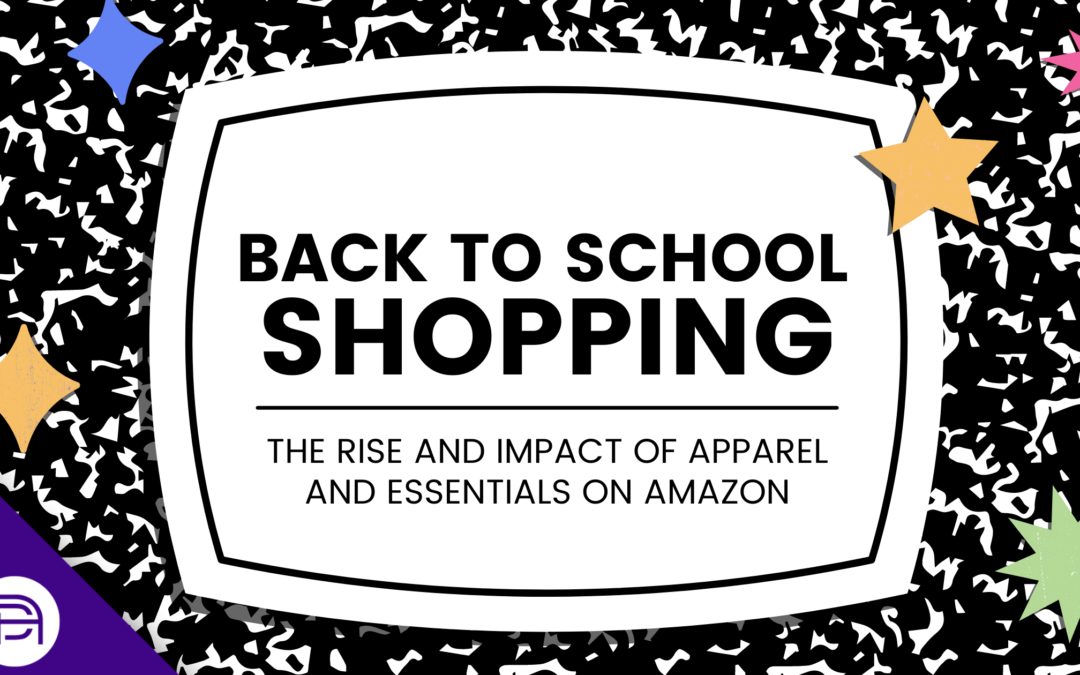You may have heard the recent news that Amazon just overtook Walmart as the largest retailer (outside of China) in the world.
Amazon’s sales grew by an astounding estimated $200 billion in the past year while Walmart’s only grew by $24 billion. Amazon’s exorbitant growth was driven by two major categories: consumer essentials and apparel.
Walmart has always been a go-to for school supplies and baby essentials. Walmart also created an exceptional foothold in grocery while Target worked to differentiate itself with new in-house fashion brands and key partnerships in apparel and home goods. The two largest big-box retailers remained competitive but found niches so that they could co-exist. But with the rise of e-commerce and Amazon’s ease of shopping experience, they disrupted these categories. Consumers are looking to Amazon now more than ever for everyday items.
Let’s take a look at how Amazon surpassed competitors to become the number one retailer for essential shopping, how this carries into the back-to-school shopping season, and how brands in these categories can strategize going forward.
The Major Shift: Shopping Behaviors During Quarantine
By now, everyone is well aware of the enormous shifts in consumer shopping habits brought on by the pandemic.
Virtually overnight, everyone stopped going into Walmart and Target in person due to the lockdown. ‘Toilet paper’ became the number one search term on Amazon for nearly two months straight. Suddenly, Amazon became the go-to place to get non-perishable essentials such as pantry staples, beverages, snacks, cleaning supplies, and more. Additionally, with new capabilities such as Amazon Fresh, buying groceries and household supplies online became even easier in a time when no one wanted to go outside.
Amazon is projected to make $14.5B in revenue in 2021 in grocery sales. For context, Amazon drove $2.2B in grocery revenue in Q4 2020, which was already a +20% YoY growth, and included Amazon Prime Day. Comparatively, Walmart is scheduled to see growth as well at a projected $10.1B in 2021; a strong number, but not enough to overtake Amazon.
“The TikTok Effect” E-commerce in the apparel industry
Similar to groceries and essentials, Amazon surpassed Walmart as the number one apparel retailer in the US in 2020. Wells Fargo analysts estimate Amazon’s market share to be about 30-35%, likely passing $45B in apparel/footwear sales in 2021. Contributing factors include the launching of Amazon Basics, Amazon’s growing slate of name brands willing to sell on-site, and the rise of Amazon influencers across social platforms such as Tiktok and Instagram.
Users are flocking to social media platforms for discovery and this has had a clear effect on Amazon sales. ‘The Tik Tok Effect’ has inadvertently helped drive millions of sales to Amazon, seemingly by accident at first.
One of our clients, an industry-leading candy brand, utilized a Tiktok influencer to showcase and review their product. The content went viral and had over 17.9M views with 4.5 M likes. As a direct result, the brand name grew 721% in search volume on Amazon in a week after the videos were posted. We can also see that Amazon’s ‘Best Seller Rank’ (BSR), which has a direct correlation with sales velocity, improved drastically immediately after the Tik Toks were posted as well.

With the rise in shopability on social media platforms, Amazon has cleverly placed an increased emphasis on off-Amazon traffic in its newest algorithm update, A10. Traffic from external sites is now one of the most important factors in the algorithm.
The Future of Back to School and Shopping for Everyday Items
While many products in these categories have a relatively flat sales curve throughout the year, one of the largest and most important peaks is back-to-school. Amazon has become increasingly influential for back-to-school shopping, most notably with its biggest sale event of the year, Prime Day. Typically set in late July, Amazon Prime Day unofficially serves as the kickoff of the back-to-school shopping season for parents, students, and teachers.
This year’s earlier Prime Day, in mid-June, benefited a broader range of categories, one, in particular, being apparel/footwear in addition to the usual supplies and electronics. These are important categories for back-to-school shopping and Amazon should be part of BTS strategies for brands as more consumers are shopping a wider array of categories.
Most parents agree that back to school is one of the most hectic times of the year. One of Amazon’s most loved back-to-school features, Amazon ‘School Lists,’ allows customers to complete all of their back-to-school shopping in one click. Simple to use, teachers create a school supply list and post it to the Amazon ‘School Lists’ site. From there, parents can easily search for a list by school and class and purchase the items all in one go.
Gone are the days of wandering the aisles of Target trying to make sure you didn’t miss anything. Amazon is simplifying that process for busy parents by allowing them to check out with minimal clicks and delivering school supplies straight to their door.
We believe there is an opportunity to capitalize on the success of this feature for apparel and essential items. There’s also an opportunity for apparel brands to take advantage of creating lists for clothing and footwear in collections or sets.
Looking Forward: Strategies to Implement Moving Forward
With back-to-school being such a crucial season for brands on Amazon, they must have a holistic approach to their online business. We recommend:
-
Growing BSR (Best Seller Rank) through sales velocity
Run small promotions/deals at the beginning of the back-to-school season. Deals and seller rankings help seller listings appear in more prominent places.
-
Implementing strong, seasonal SEO content early.
A strong SEO strategy should include optimizing the product title, bullet points, description, backend keywords, A+ content, and storefront. We’ve found that product titles optimized towards summer terms saw 11% more total sales than evergreen-optimized titles despite summer terms having lower average search volumes than evergreen, even during their peak season.
-
Increasing advertising budgets and seasonal targeting.
Advertisers must be aggressive during seasonal highs. Perform keyword and competitor research to find new targets for your campaigns, and increase bids accordingly.
While the Amazons, Walmarts, and Targets of the world continue to gain more and more online traffic and revenue, sellers are realizing that they need to increase their digital marketing presence. Walmart reported that the number of advertisers on the Walmart advertising platform increased by 175% and ad sales grew by 95% YoY. If you’re a brand looking to advertise on Amazon, Walmart, Target, Instacart, or another digital platform, reach out to Direct Agent’s e-commerce team of experts at [email protected].
– Allison Eng, eCommerce Associate Strategist



